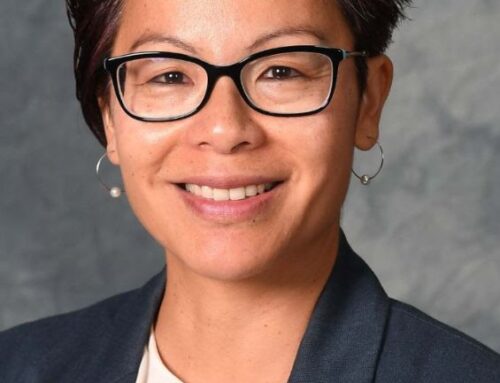Eagle-eyed readers will have noticed a change on our front page this month: we have added “pro-family” to our slogan “Canada’s pro-life newspaper.” Although it’s an awkward mouthful, and one that is not really necessary since all the life issues we deal with are family issues in one way or another, we have made the change to help those who are concerned about our “branching out.”
Seventeen years ago, anti-abortion strategists adopted a single-issue approach, reasoning that a group devoted to fighting abortion would be more effective if it focused on one main issue. This worked. Today, only those with a vested interest in the matter deny the humanity of the unborn. The debate is now about rights. We say that all those involved – mother, father, child and the community as a whole – have equal claim to certain rights. Our opponents say that women’s rights are paramount.
The single-issue approach also has this advantage: potential supporters have only one principle to agree on – that abortion kills a human being. A stand against contraception, for example, is considered too divisive, since opposition to it is seen as religiously-based. Logically, many argue, the answer to lowering the “need” for abortion is to press for greater use of contraceptives and for more sex education. The sexual revolution unleashed by the Pill in the 60s advanced the pursuit of personal freedom, and the only inhibition left was “unwanted” pregnancies.
Attacking the family
The sexual revolution, however, brought with it the breakdown of the family. Since then, marital monogamy has been touted as old-fashioned. Clearly, though, strong family structures are the best environment for nurturing children. When those structures break down, children are seen as a nuisance, as obstacles to the “personal fulfilment” of the “adults.” Abortion becomes the perfect solution. Equally important first steps for the feminist, homosexual and lesbian movements were trivializing marriage, promoting “alternative lifestyles” and pressing for communal (that is, government) support instead of stressing, and strengthening, individual family commitments. Today, we see these radical elements have assumed that the first steps have been successfully completed. Now the move is to promote and to protect, through legislation, the “public” acceptance of new-style “families.”
These movements were now slow to recognize that their particular goals would be won if they attacked the family on many fronts at once, and they have a long history of supporting seemingly-unrelated causes. Look at the groups endorsing the National Action Committee on the Status of Women (NAC), or the Canadian Abortion Rights Action League (CARAL), and you’ll see what I mean. Read the banners and note the sponsors of Women’s Day marches, peace rallies and “Take Back the Night” walks, and you’ll see the same pattern.
For example, a couple of months ago, the Ontario Coalition for Abortion Clinics co-sponsored an expensive Globe and Mail advertisement calling for universal day care. Why? On the surface, it seems absurd that a group out to kill the children would endorse a way of taking care of children. But day care is also a way to take children out of the sphere of parental influence and values and to raise future citizens conditioned to view the family in a new way.
This view of the family is sterile and bureaucratic: it will lead to exactly the kind of hell Margaret Atwood dissects in The Handmaid’s Tale. They object to “the family as a cultural institution” because it stands for all they would eliminate – responsibility, duty, tradition, role. These they call deadening and confining. But the institution of the family is a human, humane and a healthy thing because it is always an amateur effort. Amateurism ensures its vitality. They propose instead a government institution as a family – day care, etc. – that the real thing be placed by a bureaucracy. But this is inhuman, a lie, a dead thing.
Support for the family structure
If we are serious in our desire to save babies, then we must be equally serious in looking at the social environment these babies will have to live in. We must support and strengthen the family structure for them, and the first step is to remain aware of elements which weaken the family.
Obviously, the issues surrounding the family are legion and are difficult to agree on. We may not all agree on women’s roles, but can we not agree that women’s rights do not exist in a vacuum? We may not agree on contraception, but we can agree that issuing the Pill to 14-year-olds is irresponsible and subversive. We may not agree that censorship is an appropriate response to pornography, but we can agree that what currently passes as “harmless erotica” is unacceptable and subversive. We may not agree on special rights for homosexuals, but we can agree that the presentation in our schools of homosexuality as an acceptable lifestyle is not appropriate, and that tolerance and compassion for an individual’s behaviour is completely different from legal sanction and approval for such a lifestyle.
Our insistence on raising family issues in these pages is not intended to weaken or divide the pro-life movement. On the contrary, we are trying, however clumsily, to help our readers understand the ground for abortion. While we focus on this unspeakable evil and work to eradicate it again from our midst, we must never lose sight of the matters that paved the way for abortion (the Pill, sexual freedom and so on) and those which abortion has made acceptable (euthanasia, infanticide). If these influences and issues are ignored, we will never succeed, for they are as much a part of abortion as it is a part of them.
Anita and “Baby Aaron”
Anita Atta, 33, a multi-talented pro-life artist, recently created a beautiful drawing of a newly-born baby which has been made into 500 limited-edition prints now available through Campaign Life at a cost of $30 each.
Born in Toronto, Anita was a child therapist there for nine years. Three years ago she opened a daycare centre in Brampton.
She has taught art at Confederation College in Thunder Bay, as well as at a school for native people at Sandy Lake, just south of James Bay. She says that the limited-edition print of the child was made to demonstrate “the miracle of life – how dependent tiny human life is upon us, and so, especially, the unborn.”
Anita was not always pro-life but changed her views after an abortion. For many years she was one of the “beautiful people” for whom the important things were money, status (especially fast, expensive cars) and a social existence based on drugs and meaningless relationships.
Eventually, at the age of 28, Anita became pregnant. Swept along by other people’s opinions and because she felt there was no choice, Anita aborted the child at Toronto General Hospital. She described the ordeal as one of “total humiliation in an atmosphere of a meat market.” Upon waking from the anaesthetic she heard a mournful wailing, that of a terribly-distressed child, only to realize that it was coming from her. She vowed at that point to change her life. Ten days after the abortion she knew she could not do it on her own and asked God to enter her life.
This changed her life and the people around her and she has since married a born-again Christian like herself and decided to return to art full time.
Anita is now the mother of an 11-month-old boy, Aaron, the model for her baby drawing. Aaron already has a sister, ten-year-old Michele, a daughter from her husband’s first marriage.
Anita approached Campaign Life with the idea of offering the baby print to raise funds for pro-life projects. She was met with an enthusiastic response.
The drawing captures the real beauty and innocence of newborn life from an artist who now knows where it came from.
“Baby Aaron” ($30.00 ea. Unframed) is available from Campaign Life at 215 Victoria Street, # 505, Toronto, Ontario, Canada M5B 1T9. Or call (416) 368-8479 VISA or MasterCard accepted.
All proceeds go to Campaign Life.




